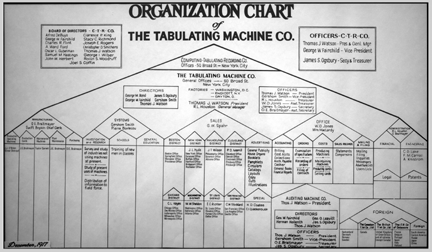Efficiency of Modular Construction
As described earlier, Herbert Simon pointed out the universal existence of hierarchical structure in a classic 1962 article: The Architecture of Complexity (reprinted by Anatol Rapoport in the General System Yearbook).
In that article Simon noted that large components enable a system to be assembled more efficiently, particularly if the construction process is subject to interruptions.
Simon used a parable involving two watchmakers named Hora and Tempus. Each had a business assembling watches with 1000 pieces.
Hora used a kit that required fitting together all 1000 pieces in one operation. Hora's kit took a long time to complete, and it fell apart if Hora was interrupted before it was done.
As business picked up, there were many interruptions from people wanting to order watches. Consequently, Hora could not complete many watches and went out of business.
Tempus, by contrast, assembled watches from sub-assemblies of 10 pieces each. If the process was interrupted, a sub-
Simon then proved the same point with simple mathematics. Nature favors systems constructed from modules or pre-existing subsystems.
The same pattern is seen in human-
The principle of modular construction: Complex systems are built more efficiently when constructed out of larger rather than smaller components.
Loose vs. Formal Hierarchies
Simon distinguished between two senses of the word hierarchy. In the loose sense, a hierarchical organization is present in any system "analyzable into successive sets of subsystems" (1962, p.64). Simon called this a loose definition because it is very inclusive; it is true of all systems because all systems have components.
This type of hierarchy can be called an embedded hierarchy. Parts are embedded in the systems they compose.
By contrast, a formal hierarchy is a control system in which "every boss has a boss." In this case the hierarchy represents a flow of power, status, or control.
For example, power can flow from rulers to subjects or from employers to employees. This can be called a control hierarchy.
This is our first mention of control systems, a concept that will occur again in this toolkit because control systems are often found in complex systems. The word control is perhaps too strong in some cases; the word influence is just as useful. In a system where one part influences another, engineers or cyberneticists will see a control system.
Patterns of influence (control) between different components of a system can often be illustrated in pyramid-shaped diagrams such as the organization chart of a business. In a business, every boss has a boss.
The CEO (chief executive officer) is in charge of the whole company. Vice-
A control hierarchy is not the same thing as an embedded hierarchy of components. Employers are not physically made up of their employees.
However, employers have a degree of control over their employees, and the flow of influence in a corporation can be represented in a pyramid-shaped hierarchical structure. Here is a 1917 organization chart of The Tabulating Machine Company, later called IBM.

A 1917 organization chart
Military organizations have a similar structure called the chain of command. Every military person is clearly aware of his or her superior.
A similar phenomenon in group-living species like chickens and wolves is called a dominance hierarchy. "Every boss has a boss."
Among chickens, the pecking order is a dominance hierarchy. Each chicken discovers who is safe to peck and who is not. The poor chicken at the bottom of the pecking order can be pecked by all the others but cannot peck any back.
Both types of hierarchies (embedded hierarchies and control/influence hierarchies) involve a larger system with components and relationships between the components. They have that in common.
Systems such as humans, cars, and computers have both types of hierarchies. They are composed of smaller parts plus they have control systems involved in processes like accelerating and braking the car.
An analysis emphasizing physical parts (hierarchical composition) will look different from an analysis emphasizing flows of information (hierarchical control). If the different maps of a system are accurate, they will not contradict each other. (This is true of maps generally, as we will discuss on the page about networks.
Both types of hierarchical structure are subject to Simon's insight from the parable of Hora and Tempus. Larger wholes are assembled most efficiently by combining large modules. For example, a larger family can be created quickly by merging two existing families through marriage.
---------------------
Reference:
Simon, H. A. (1962) The architecture of complexity. Proceedings of the American Philosophical Society, 106, 467-482.
Write to Dr. Dewey at psywww@gmail.com.
Search Psych Web including the General Systems Toolkit and the online textbook Psychology: An Introduction below.
Copyright © 2017 Russ Dewey
